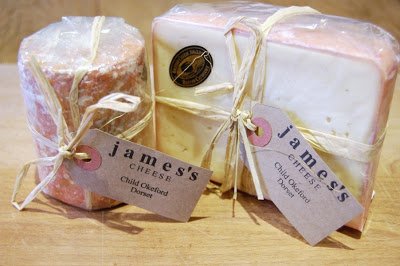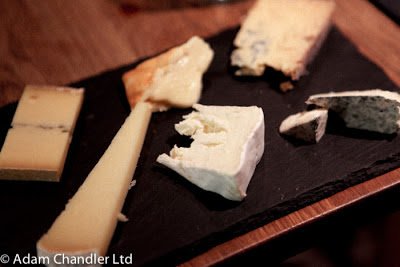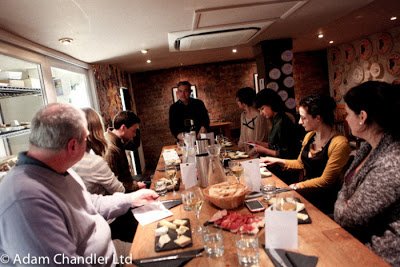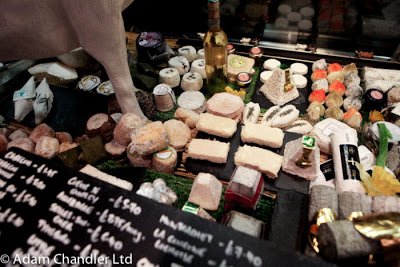The Cheesewire pages
of Fine Food Digest magazine have been ripe with some rather pongy cheeses in recent months as an
increasing number of British producers launch new washed rind
cheeses.
Bathed in alcohol or
brine as they mature, these kinds of cheeses famously develop a
particularity pungent rind thanks to the growth of sticky
red-coloured bacteria, which are also the cause of smelly feet. The
French have been blowing our socks off for centuries with classics
such as Munster and Epoisses, but now a new generation of British
cheesemakers are also dipping their collective toe in the whiffy
waters of rind washing.
These new products not
only meet growing demand for strong British cheeses, they are also
seen as a relatively easy way to expand a business. Rather than
developing a completely new recipe, all the cheesemaker has to do is
take an existing cheese, give it a wash in local cider or ale as it
matures and, hey presto, he or she has a brand new product to sell.
It sounds simple, but
the odorous arts of cheese washing are anything but, according to
James McCall. He worked for the granddaddy of British washed rind
cheeses - James Aldridge - for seventeen years from the late 1980s,
making Tornegus and Celtic Promise, and today runs his own company
specialising in these types of cheeses.
In an article in last
year's FFD, he branded many new washed rind cheeses as “gimmicky”
and voiced concerns about “unskilled” cheesemakers risking health
and safety, which could damage the reputation of the category as a
whole.
 “You have to be
dedicated to washed rind cheeses and take them very seriously,” he
explained to me last month as we discussed his Dorset-based business
James's Cheese. “They are not something to just fit in between
other cheeses. They really need their own dedicated maturing room, so
you don't get different bacteria jumping from cheese to cheese, and
it takes time and commitment to develop a really good product.”
“You have to be
dedicated to washed rind cheeses and take them very seriously,” he
explained to me last month as we discussed his Dorset-based business
James's Cheese. “They are not something to just fit in between
other cheeses. They really need their own dedicated maturing room, so
you don't get different bacteria jumping from cheese to cheese, and
it takes time and commitment to develop a really good product.”
McCall, who has also
worked at Daylesford Organic, Cranborne Chase and Chalke Valley
Cheese, set up James's in a converted barn in Child Okeford in 2011.
The company's main product is Francis - a pasteurised cow's milk
cheese, made by washing young Stoney Cross rounds from
Salisbury-based Lyburn.
Last year, the cheese,
which is named after James Aldridge (his middle name was Francis),
won the Best New Cheese category at the British Cheese Awards.
Listings with The Fine Cheese Co and Paxton & Whitfield soon
followed with the Cheese Cellar listing it this month. The wholesaler
will also carry the company's other cheese Burwood Bole - a washed
rind cow's milk log, which is based on a cheese made by McCall
himself at Chalke Valley's production premises.
“Entering that award
was the best fifteen quid I ever spent,” says McCall. “It really
raised the profile of the cheese and has opened doors for me.”
As washed rind cheeses
go, Francis is quite mild. The pink marbled rind has a pleasant tangy
smell without the nose-wrinkling niff you get with other cheeses,
while the interior has a fresh appley flavour. “I don't like it
when a washed rind cheese is mega matured. I like firmer younger
cheeses where the flavour from the rind is in the background,” says
McCall.




